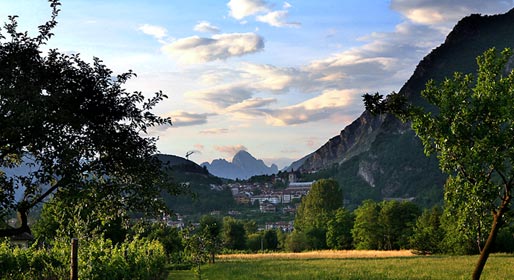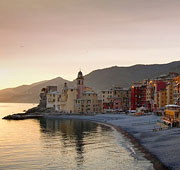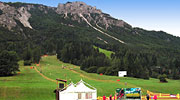The towns of Carnia
The beauty of Friuli and the incredible rebirth of the towns and villages of Carnia.

In the wake of the devastating earthquake of 1976, for many this land among the mountains seemed destined to remain an irreversibly scarred terrain.
Yet, in just a few years since the powerful tremors brought much of Carnia crashing to the ground, this part of Friuli is, once more, one of the most beautiful in the region.
Old and new Gemona
Our exploration of Carnia commences in Gemona, whose beautifully restored churches and patrician palazzi testify to the incredibly resilient spirit of the town's inhabitants.
Gemona's cathedral of Santa Maria Assunta, its facade dominated by an impressive Universal Judgement, is a fine example of Gothic Romanesque.
Inside the church, the crumpled pink marble columns and battered 15th century crucifix, serve as poignant reminders of the earthquake's destructive power
In the heart of Gemona, the winding Via Bini, is lined by a succession of noble palazzi sporting ornately painted facades. Among these we find Palazzo Elti, now the town's Civic Museum, in which to admire an impressive collection of archaeological findings and artworks retrieved from those churches damaged by the earthquake.
Destroyed by the earthquake and rebuilt in modern style, the Sanctuary of Sant Antonio is considered to be the oldest site of worship dedicated to the patron of lost things and missing persons, in the world. Inside, the apse of the Rosario chapel has been left exactly as the Swiss-born Melchiorre Widmar conceived it.
Venetian Gothic and mummies: in Venzone
We make our next stop at Venzone, its historic center enclosed within ancient perimeter walls. Venzone's Palazzo Comunale, adorned with the stems of numerous aristocratic families, is a splendid example of Venetian Gothic architecture.
With its 16th century portal, stone gallery and wrought iron parapet Palazzo Orgnani-Martina, is another of the town's most impressive edifices. Thanks to careful restoration work, the damage inflicted by the earthquake has been notably reduced and the palazzi returned to their original splendor.
The baptistery houses the so-called Venzone mummies: the bodies of aristocrats buried in the Duomo between the 14th and 19th centuries and subject of spontaneous mummification
The Duomo of Sant Andrea, another of Carnia's Gothic Romanesque masterpieces, still contains its original frescoes.
Frescoes and folklore in Tolmezzo
For many, the town of Tolmezzo represents the heart of Carnia. The historic center, known as Borgàt, is characterized by arcaded streets lined with centuries old patrician residences and ancient houses of worship, one of the most important of which is the Cathedral of San Martino, home to numerous works from the Venetian school and an impressive frescoed dome by Antonio Schiavi.
Not to be missed, the town's Folklore Museum, which documents the old traditions Carnia, and contains a fascinating exhibition of traditional farming instruments, and the tools used by the area's carpenters and tailors.
Dinosaurs and prosciutto
We travel only a few kilometers from Tolmezzo to find ourselves immersed in the natural paradise surrounding Lake Cavazzo Carnico, much loved by excursionists, trekkers and mountain bikers.
It appears that this part of Friuli was once inhabited by dinosaurs, thesis supported by documents in Preone's paleontology museum, located in the 18th century Palazzo Lupieri
The last part of our journey through Carnia brings us to Sauris, a picturesque little mountain town, famous for its exquisite prosciutto.
The village is divided in two, Sauris di Sopra and Suaris di Sotto. The higher part of the town is home to the Sanctuary of Sant Osvaldo, in which a late Gothic panel by Nicolò di Brunico is conserved.
















